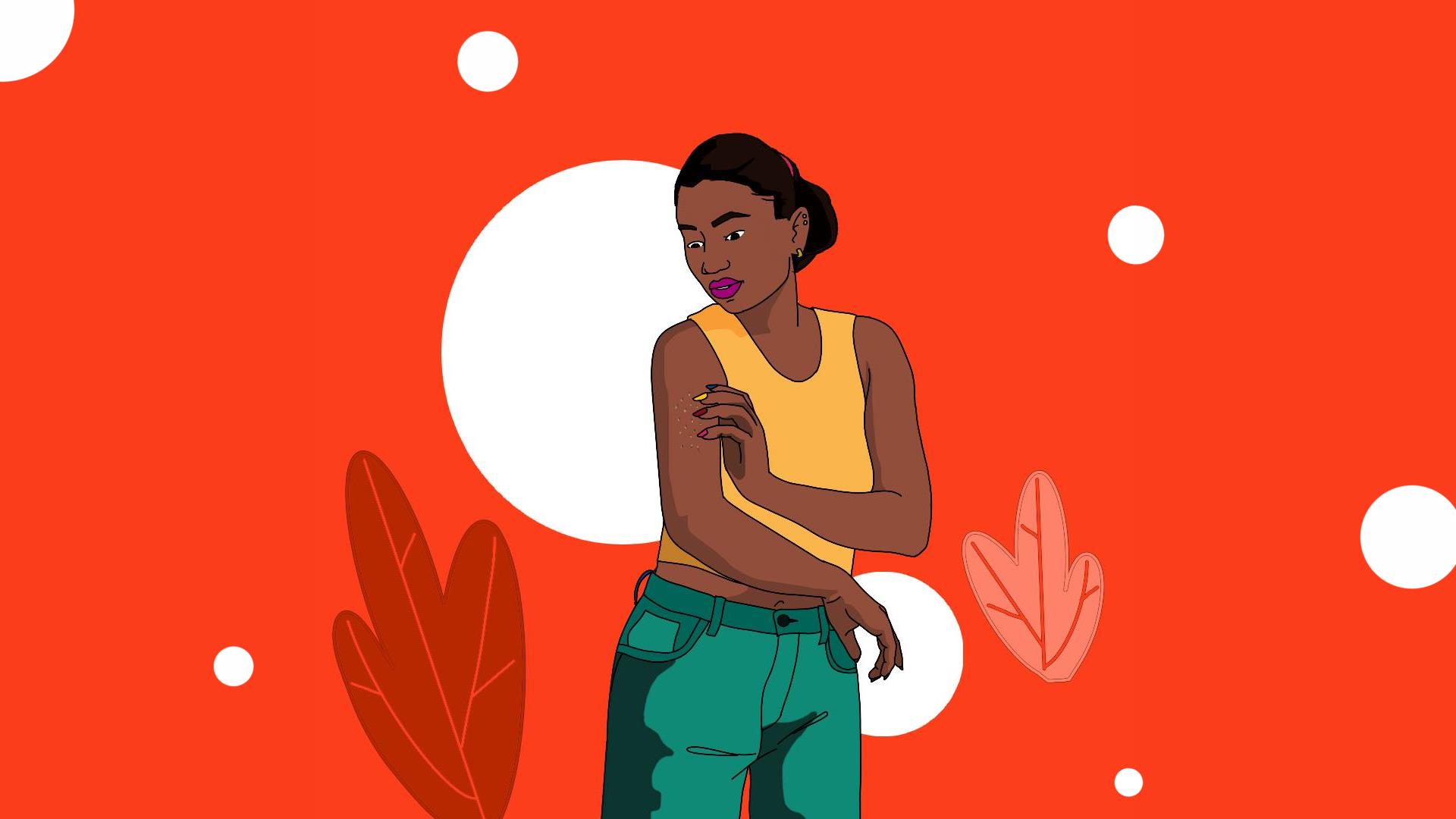🎧 Listen to: Fungal Skin Infection

Fungal Skin Infection
What is a fungal infection?
Fungi are tiny organisms that live everywhere in the soil, on plants, and even on human skin. Most of the time, they don’t cause problems, but when they grow too fast or enter the skin through a cut, they can lead to an infection. Since fungi thrive in warm, damp places, infections often occur in sweaty areas like the feet, groin, and skin folds.
In Africa’s hot and humid climate, fungal infections are very common, especially among people who sweat a lot, wear tight clothes, or share personal items. While these infections are not usually dangerous, they can be itchy, irritating, and sometimes embarrassing.
How common are fungal infections in Africa?
- Fungal skin infections are widespread across Africa, affecting millions of people yearly.
- Studies show that over 20% of Africans suffer from ringworm, athlete’s foot, or other fungal infections at some point in their lives.
- Poor hygiene, tight clothing, and walking barefoot increase the risk of infection.
- Many people ignore symptoms or use harmful home remedies instead of seeking proper treatment.
Common types of fungal skin infections?
Ringworm (tinea corporis)
- Despite its name, ringworm is not caused by a worm but by a fungus.
- It appears as a round, itchy rash with slightly raised edges.
- Highly contagious and spreads through skin contact or sharing personal items.
- Can be treated with antifungal creams or medicines.
Athlete’s foot (tinea pedis)
- Common among people who wear closed shoes for long hours.
- Symptoms include:
- Itchy, burning, or stinging sensation between the toes.
- Dry, flaky, red, or cracked skin on the feet.
- Can spread to other areas like the nails and hands.
Jock itch (tinea cruris)
- Affects the groin and inner thighs, common in men and boys.
- Symptoms include:
- A red, itchy rash that may spread to the buttocks or lower abdomen.
- Skin may look scaly, flaky, or cracked.
Scalp ringworm (tinea capitis or “kakawerewere” in Akan)
- Common among children and causes bald patches on the scalp.
- Symptoms include:
- Scaly, red patches with itching.
- Tender or painful areas.
- Requires prescription medication and antifungal shampoo for effective treatment.
Tinea versicolor (pityriasis versicolor)
- Caused by overgrowth of a fungus naturally present on the skin.
- Symptoms include:
- Small, discolored patches on the back, chest, or arms.
- Patches can be lighter or darker than the surrounding skin.
- More common in hot and humid climates.
Candidiasis (yeast infection of the skin)
- Affects warm, moist areas such as under the breasts, buttocks, or armpits.
- Symptoms include:
- A red rash that may be itchy.
- Small, red pustules (pus-filled bumps).
- Common in babies (diaper rash) and people with weak immune systems.
Nail fungus (onychomycosis or tinea unguium)
- Affects fingernails or toenails, making them:
- Yellow, brown, or white in color.
- Thick and brittle.
- Difficult to trim or break easily.
- Often requires prescription antifungal medicine.
What increases the risk of fungal infections?
You are more likely to get a fungal infection if you:
- Live in a hot and humid environment.
- Sweat a lot or don’t keep your skin dry.
- Walk barefoot in public places like showers or markets.
- Share clothes, towels, or shoes with others.
- Wear tight clothes or shoes that don’t allow air circulation.
- Have a weak immune system due to illness (e.g., diabetes or HIV).
When to see a doctor?
See a doctor if:
- The infection does not improve with antifungal creams.
- You have hair loss, itching, or scaly skin on your scalp.
- You have a weak immune system and suspect a fungal infection.
- You have diabetes and notice foot or nail infections.
Treatment for fungal infections?
Fungal infections can be treated with antifungal medications, which come in different forms:
- Creams or ointments (for mild infections on the skin)
- Pills (for severe infections or scalp ringworm)
- Powders and sprays (to prevent recurrence)
- Shampoos (for scalp infections)
Preventing fungal infections?
- Keep skin clean and dry, especially in folds and between toes.
- Wear loose clothing and breathable shoes.
- Change socks and underwear daily.
- Avoid sharing personal items like towels, combs, or shoes.
- Sun-dry shoes and clothes properly after washing.
- Use antifungal powders if you sweat a lot.
Key takeaway?
Fungal skin infections are common in Africa but can be easily treated and prevented with good hygiene and proper care. If an infection persists, see a doctor to avoid complications.
